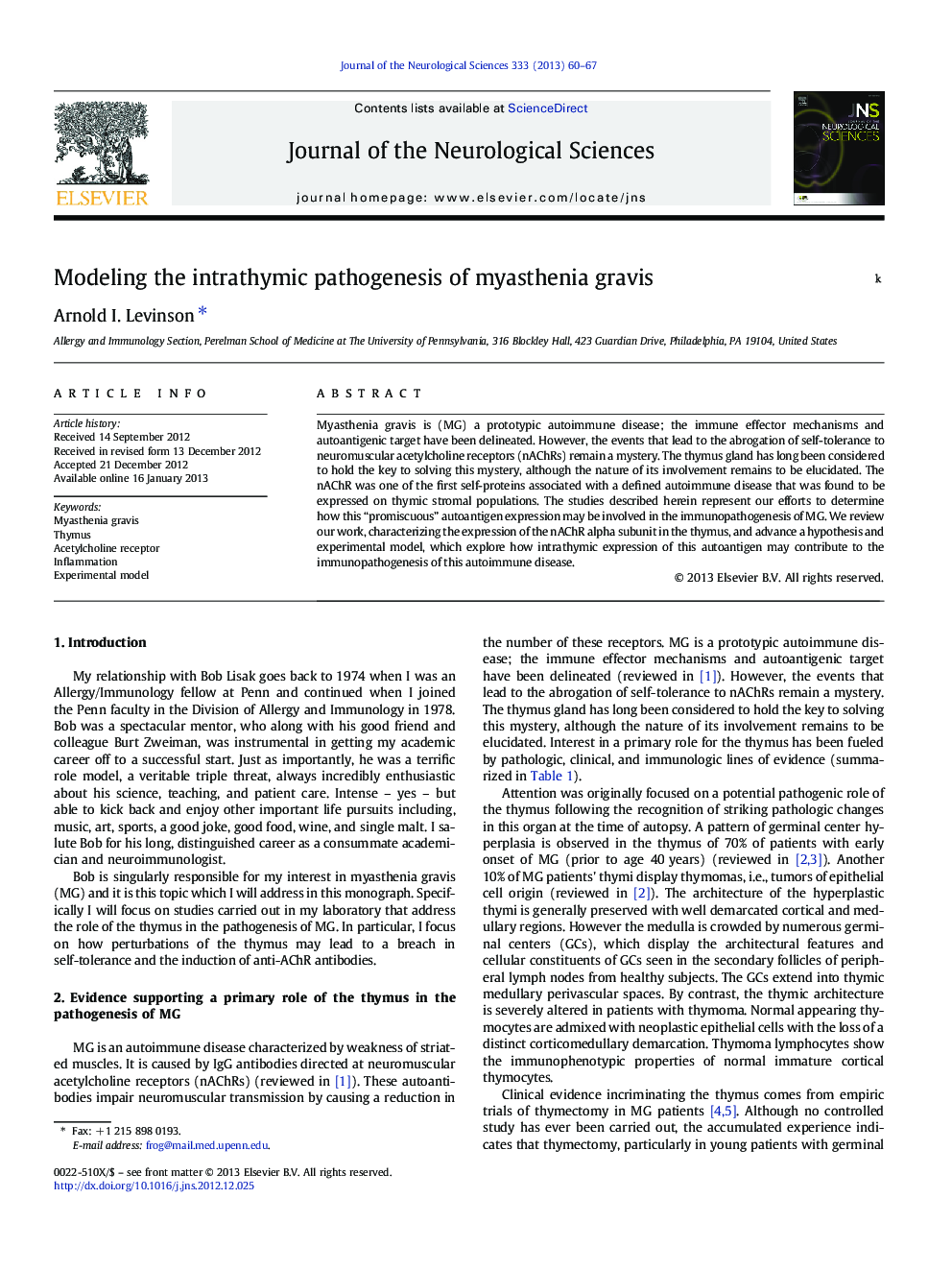| Article ID | Journal | Published Year | Pages | File Type |
|---|---|---|---|---|
| 8279106 | Journal of the Neurological Sciences | 2013 | 8 Pages |
Abstract
Myasthenia gravis is (MG) a prototypic autoimmune disease; the immune effector mechanisms and autoantigenic target have been delineated. However, the events that lead to the abrogation of self-tolerance to neuromuscular acetylcholine receptors (nAChRs) remain a mystery. The thymus gland has long been considered to hold the key to solving this mystery, although the nature of its involvement remains to be elucidated. The nAChR was one of the first self-proteins associated with a defined autoimmune disease that was found to be expressed on thymic stromal populations. The studies described herein represent our efforts to determine how this “promiscuous” autoantigen expression may be involved in the immunopathogenesis of MG. We review our work, characterizing the expression of the nAChR alpha subunit in the thymus, and advance a hypothesis and experimental model, which explore how intrathymic expression of this autoantigen may contribute to the immunopathogenesis of this autoimmune disease.
Related Topics
Life Sciences
Biochemistry, Genetics and Molecular Biology
Ageing
Authors
Arnold I. Levinson,
